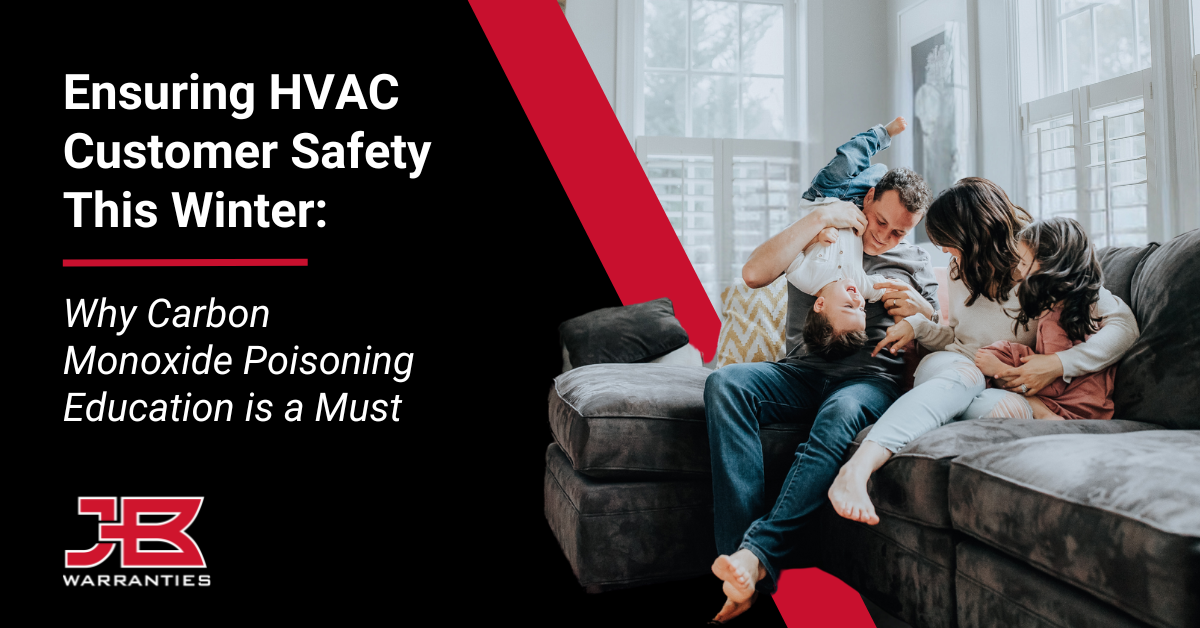
Carbon monoxide poisoning. Three words that no homeowner — nor any HVAC service provider — wants to hear. There are several common sources of carbon monoxide poisoning that pose a risk to home and business owners alike, no matter the time of year. However, the increase in various fuel-burning heat devices that accompany the winter months only spikes this omnipresent threat.
So, what is the source of carbon monoxide poisoning, and is there anything HVAC technicians can do to help? Better yet, is AC carbon monoxide poisoning possible, and should service technicians warn home and business owners about system installs? Keep reading for everything you need to know about carbon monoxide poisoning, including how to educate yourself, your team, and your customers.
What is Carbon Monoxide Poisoning?
.png?width=300&height=300&name=JBW-Blog-InLineImage-SilentKiller-500%20%C3%97%20500%20(1).png) Dubbed the “silent killer” because it is largely undetectable, carbon monoxide is a toxic, odorless gas that poses significant health risks to humans and animals when inhaled for an extended period of time. Carbon monoxide is the chemical byproduct of carbon-containing products, including natural gas, gasoline, and propane, which is released when the product is burned, namely for heating.
Dubbed the “silent killer” because it is largely undetectable, carbon monoxide is a toxic, odorless gas that poses significant health risks to humans and animals when inhaled for an extended period of time. Carbon monoxide is the chemical byproduct of carbon-containing products, including natural gas, gasoline, and propane, which is released when the product is burned, namely for heating.
Across a residence or business, you can find many common sources of carbon monoxide, including gas stoves, fireplaces, generators, and, of course, HVAC equipment. Throughout the colder winter season, customers often crank up their natural gas-powered boilers and furnaces to effectively heat their properties, which will prompt the release of carbon monoxide.
While carbon monoxide emissions are usually safely contained and expelled through a unit’s vent system, certain system troubles can trigger a harmful release of carbon monoxide within the home. From cracked heat exchangers to leaks within flue vent pipes, customers and contractors must remain aware of the multiple HVAC malfunctions that can impact indoor air quality and safety.
Fast Facts: Annual Impacts of the Silent Killer
According to the Centers for Disease Control and Prevention (CDC), at least 420 people across the U.S. are killed each year due to accidental carbon monoxide exposure. Another 100,000+ individuals must visit an emergency room due to carbon monoxide inhalation, with an additional 14,000 of these patients requiring hospitalization due to poisoning.
Just in November 2023, the U.S. Consumer Product Safety Commission issued a product recall alert for certain Lochinvar, A.O. Smith condensing boilers, combi boilers, and packaged systems. It was discovered that a high-impact event in the burner chamber could cause the boiler’s flue collector to crack, resulting in a possible carbon monoxide leak inside the home.
With this single recall affecting over 17,000 units alone, it’s no secret as to why carbon monoxide poisoning training and education are so important. Taking the time to understand the dangers of carbon monoxide exposure and the general safety tips you can supply to customers not only supports customer satisfaction but also can potentially save their lives.
Dangers of Carbon Monoxide Exposure
Carbon monoxide got its nickname, the “silent killer,” due to its odorless and colorless features. Without a carbon monoxide detector, customers may be unaware of rising levels inside their homes and businesses. When carbon monoxide is inhaled, the body’s red blood cells cannot properly absorb oxygen, resulting in vital organs, including the brain and lungs, becoming oxygen-deprived.
While everyone faces life-threatening consequences with carbon monoxide exposure, infants, senior citizens, and adults with chronic health conditions such as heart disease and respiratory issues face even higher exposure risks. Generally speaking, exposure even to low levels of carbon monoxide can result in symptoms including dizziness, nausea, headache, and flu-like symptoms.
When a customer is exposed to higher levels of carbon monoxide for an extended period, they can expect more intense symptoms including:
- Vomiting
- Blurred vision
- Shortness of breath
- Abdominal and chest pain
- Loss of consciousness
- Organ damage
- Death
Even if a customer’s carbon monoxide detector isn’t issuing an alert, in the event these signs of exposure suddenly arise, it’s wise to seek medical assistance to err on the side of caution. It’s also advised to educate customers on the symptoms of carbon monoxide poisoning at the time of a new HVAC unit installation, as well as best practices to help prevent carbon monoxide leaks.
True or False: Can You Get AC Carbon Monoxide Poisoning?
.png?width=300&height=300&name=JBW-Blog-InLineImages-TrueFalse-500%20%C3%97%20500%20(1).png) There is often a bit of confusion amongst customers on whether or not it’s possible to get AC carbon monoxide poisoning. The short answer to this question is no. Air conditioners are electrically powered and do not burn fossil fuels, such as natural gas, to cool a home. In regards to HVAC, the risk of carbon monoxide leaks usually arrives in the winter when customers begin to use gas-powered furnaces and boilers to heat their homes.
There is often a bit of confusion amongst customers on whether or not it’s possible to get AC carbon monoxide poisoning. The short answer to this question is no. Air conditioners are electrically powered and do not burn fossil fuels, such as natural gas, to cool a home. In regards to HVAC, the risk of carbon monoxide leaks usually arrives in the winter when customers begin to use gas-powered furnaces and boilers to heat their homes.
However, it’s important to note that AC carbon monoxide poisoning is possible — in a sense. Outside of HVAC heating devices, carbon monoxide leaks can also originate from other areas of the home, including kitchen appliances, fireplaces, and water heaters. If any of these additional sources currently have a carbon monoxide leak, running an air conditioning unit can circulate the tax gas emission around the property and worsen exposure risks.
HVAC Carbon Monoxide Training Tips
While AC carbon monoxide poisoning is not a threat, there are still several household appliances that can cause carbon monoxide poisoning, particularly larger equipment like furnaces and boilers. So, HVAC technicians need to be aware of the dangers of carbon monoxide, not only for themselves but for the safety of customers and homeowners. Here are a few educational tips to share:
- Offer carbon monoxide detector installation services. This life-saving device absolutely should be installed throughout the home, especially in bedrooms and kitchen spaces. Make sure these detectors are also tested annually alongside yearly battery replacements.
- Encourage thorough inspection of ventilation systems. Routine ductwork inspections are important to determine whether tears or gaps have developed in an HVAC unit’s vents, flues, or ductwork. Confirming that ventilation systems are properly sealed ensures adequate airflow across the home and no carbon monoxide leaks inside the home.
- Promote routine HVAC system inspections and tune-ups. From heat exchanger inspections to routine furnace maintenance, it’s ideal for customers to undergo thorough HVAC system inspections and tune-ups. To ensure optimal and safe HVAC performance all winter long, push for customers to book their system work before the cold weather sets in.
Partner Your HVAC Inspection Services with JB Warranties
As business owners ourselves, JB Warranties understands just how much you value your customers — not only because they support your HVAC services but because they’re likely members of your community. While the majority of carbon monoxide poisoning events are sudden accidents, HVAC providers like you and your team can work to reduce these tragedies by educating your community.
When it’s time to educate home and business owners on the dangers of carbon monoxide poisoning, guarantee that your team will be called in to service potential HVAC malfunctions by selling customers an extended warranty. To learn more about how extended warranties can benefit both your customers and your HVAC business, read the latest blog by JB Warranties.

Tommy Cue
Vice President of Strategic Partnerships at JB Warranties






